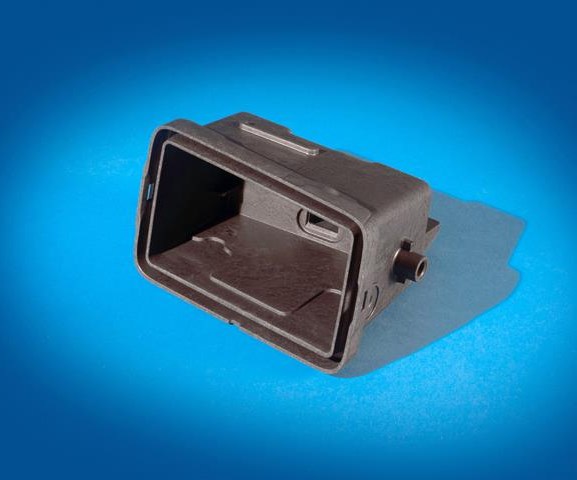Covestro's Thermally Conductive PC First to be Used for Auto LED Fog Lamp Housing
The LED fog lamp housing made of Covestro’s Makrolon TC8030 PC was among a handful of material category finalists in the 2019 Annual SPE Automotive Innovation Awards competition.
Among plastics suppliers at the forefront in the development of a variety of emerging innovative automotive plastics applications, is Covestro, Pittsburgh. One relatively recent example is that of the company’s thermally conductive (TC) polycarbonate, which is believed to be the first time such a material has been used to mold an automotive LED fog lamp housing. This component, used in a light truck by a major OEM, was named a materials category finalist in the 2019--the 49th annual--SPE Automotive Innovation Awards Competition.
With an increased focus on lightweighting, the OEM and supplier turned to Makrolon TC8030 PC from Covestro to improve the truck’s fog lamp housing. This material, which is injection molded, delivers several improvements when compared to the die-cast aluminum material previously used, including: more than 40% weight saving; over 10% reduction in component count resulting from design integration; a 20% cost reduction for full lamp assembly; and a 30 lumen increase due to improved heat management for LED performance.

MakrolonTC8030 reportedly also offers a variety of structural benefits, such as high stiffness, great high-temperature fatigue life and good creep resistance when compared to traditional materials. Additionally, once the LED board is removed, the PC housing can be easily recycled.
The housing’s mechanical design is also unique, including increased thickness on the inside of the housing which enables constant contact with the PCB board for better heat dissipation. Yet, other advantages of Makrolon TC8030 include: high thermal conductivity for outstanding heat management; excellent dimensional stability; electrical conductivity to dissipate electrostatic charges; and, low EMI shielding for electronic integration.
Said Covestro’s automotive lighting segment manager Michael George, “As the automotive industry continues to evolve, it’s important for materials to keep pace….This application of a thermally conductive polycarbonate in a fog lamp housing opens the door to new possibilities, such as more flexible heat sink designs, integrated electronics, and the use of lamp housings for thermal management.”
Related Content
-
Medical Molder, Moldmaker Embraces Continuous Improvement
True to the adjective in its name, Dynamic Group has been characterized by constant change, activity and progress over its nearly five decades as a medical molder and moldmaker.
-
Get Color Changes Right In Extrusion Blow Molding
Follow these best practices to minimize loss of time, material and labor during color changes in molding containers from bottles to jerrycans. The authors explore what this means for each step of the process, from raw-material infeed to handling and reprocessing tails and trim.
-
What to Look for in High-Speed Automation for Pipette Production
Automation is a must-have for molders of pipettes. Make sure your supplier provides assurances of throughput and output, manpower utilization, floor space consumption and payback period.





